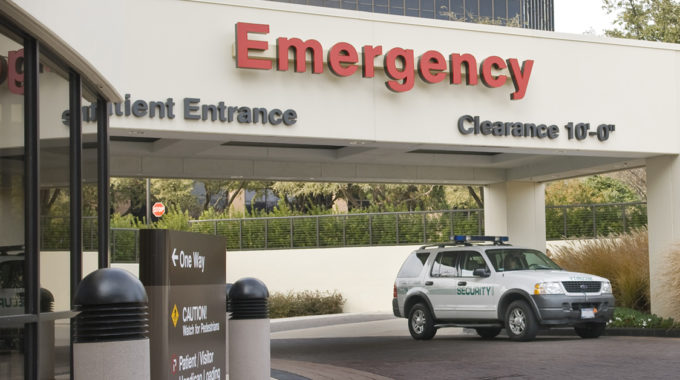
Are Federal Policies Improving End-of-Life Care in America?
Recently, the Journal of the American Medical Association published a study examining the effects of federal rules on the American experience with end-of-life care.1 Lead author Joan Teno, MD and her research colleagues found a trend of worsening between year 2000 and 2009 but of improvement from 2009 to 2015. The timing of these improvements correlates with major federal policy changes, leaving the impression that these measures are indeed accomplishing some of their intended effects.
Previously, healthcare analysts expressed concerns with the appropriateness of healthcare that Americans were receiving in the last months and weeks of their lives.2-6 Patients and families were giving the quality of care low ratings. People were suffering from pain and other symptoms that could have been medically controlled. Families faced unmet needs in personal care and in care planning. Quality of life was being negatively affected by fruitless aggressive therapies, repeated ER visits, and repeated hospitalizations.
Around 2009, the federal government enacted policies designed to address these complaints. Policy-makers, in agreement with certain medical associations, resolved that burdensome health care very near the end of life should be avoided. The new policies promoted better conversations between doctors and patients about the patients’ goals and greater patient involvement in end-of-life planning. Financial incentives encouraged hospitals to provide discharge planning that better promoted successful transitions from hospital to home. Some of these changes were advanced in the Patient Self-Determination Act and the Affordable Care Act.
Many of these policies clearly favored improving patient access to home hospice care. A large body of research demonstrates that appropriately timed home hospice helps keep patients out of the ER and hospital, improves family satisfaction, improves symptom control, improves quality of life, and improves patient survival by days to months – all while saving money for both families and Medicare.7-15 Additionally, most elderly patients express a preference to die in the comfort of home, with loved ones and free of pain. Hospice makes this preference possible when referrals are well-timed.
In the current study, Dr. Teno and colleagues analyzed the Medicare and Medicare Advantage billing records of more than two million people who died between 2000 and 2015. They looked at several specific measures to glean impressions about changes in quality of care. The general trend for many of those statistics signals improvement. The percentage of people who were able to die at home was falling between 2000 and 2009, but climbed to 40% by 2015. Researchers consider receiving hospice for 30 days a mark of quality care. Similarly, receiving hospice for less than four days, while sometimes unavoidable, signals potential for improvement. The percentage of people receiving 30 days of hospice climbed from 0.9% in 2009 to 2.7% in 2015. The percentage of people who received hospice for less than four days was 4.6% in 2000, worsened to 9.8% by 2009, but improved to 7.7% by 2015. Researchers measured similar trends in percentage of patients dying in acute care facilities, hospice enrollment at time of death, transitioning between sites of care in the last days of life, etc.
While quality of care indicators seem to be improving, one of the greatest opportunities appears to be increasing the number of days families receive hospice. Research consistently shows that the hospice advantages cited here become stronger the longer a patient is in hospice. Symptom control, quality of life, improved survival, family satisfaction with care, and cost savings all rise with more time in hospice. Hospice works best when care begins while one to six months of life remain. Helping families find and use hospice in a timelier fashion will be one of the important challenges of the next decade.
Related Articles:
- Comfort And Control Are Top Priorities For End Of Life Care
- Recent Studies Confirm Hospice Improves Satisfaction In End-Of-Life Care
References:
- Teno JM, Gozalo P, Trivedi AN, Bunker J, Lima J, Ogarek J, Mor V. Site of death, place of care, and health care transitions among US Medicare beneficiaries, 2000-2015. JAMA. 2018 Jul 17;320(3):264-71.
- Institute of Medicine (US). Committee on Approaching Death: Addressing Key End-of-Life Issues. Dying in America: Improving quality and honoring individual preferences near the end of life. National Academies Press; 2015.
- Teno JM, Gozalo PL, Bynum JP, Leland NE, Miller SC, Morden NE, Scupp T, Goodman DC, Mor V. Change in end-of-life care for Medicare beneficiaries: site of death, place of care, and health care transitions in 2000, 2005, and 2009. JAMA. 2013 Feb 6;309(5):470-7.
- Connors AF, Dawson NV, Desbiens NA, Fulkerson WJ, Goldman L, Knaus WA, Lynn J, Oye RK, Bergner M, Damiano A, Hakim R. A controlled trial to improve care for seriously ill hospitalized patients: The study to understand prognoses and preferences for outcomes and risks of treatments (SUPPORT). JAMA. 1995 Nov 22;274(20):1591-8.
- Teno JM, Clarridge BR, Casey V, Welch LC, Wetle T, Shield R, Mor V. Family perspectives on end-of-life care at the last place of care. JAMA. 2004 Jan 7;291(1):88-93.
- Teno JM, Mor V, Ward N, Roy J, Clarridge B, Wennberg JE, Fisher ES. Bereaved family member perceptions of quality of end‐of‐life care in US regions with high and low usage of intensive care unit care. Journal of the American Geriatrics Society. 2005 Nov;53(11):1905-11.
- Lah S, Wilson E, Brown SM. The association between hospice utilization and performance on publicly reported outcome measures. In A14. Advance Care Planning and Palliative Care: Patients to Policy 2016. (pp. A1015-A1015). American Thoracic Society.
- Gomes B, Calanzani N, Higginson I. Benefits and costs of home palliative care compared with usual care for patients with advanced illness and their family caregivers. 2014; 311 (10): 1060-10661.
- Von Gunten C. Evolution and effectiveness of palliative care. Am J Geriatr Psychiatry. 2012; 20 (4): 291-297.
- Schockett E, Teno J, Miller S, Stuart B. Late referral to hospice and bereaved family member perception of quality of end-of-life care. J Pain Symptom Manage. 2005; 30: 400-407.
- Teno J, Casarett D, Spence C, et al. It is ‘‘Too Late’’ or is it? Bereaved family member perceptions of hospice referral when their family member was on hospice for seven days or less. Journal of Pain and Symptom Management. 2012; 43 (4): 732- 738.
- Cheraghlou S, Gahbauer E, Leo-Summers L, et al. Restricting symptoms before and after admission to hospice. The American Journal of Medicine. 2016; 129: 754.e7 – 754.e15.
- Rabow M, Kvale E, Barbour L, et al. Moving upstream: A review of the evidence of the impact of outpatient palliative care. J Palliat Med. 2013; 16: 1540-1549.
- Casarett D, Pickard A, Bailey F, et al. Do palliative consultations improve patient outcomes? J Am Geriatr Soc. 2008; 56 (4): 593-599.
- Temel J, Greer J, Muzikansky A, et al. Early palliative care for patients with metastatic non-small-cell lung cancer. N Engl J Med. 2010; 363 (8): 733-742.





